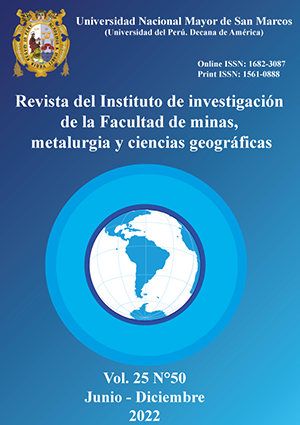New environmental parameters to determine the amount of polluting chemical substance in effluents and emissions in Peruvian legislation
DOI:
https://doi.org/10.15381/iigeo.v25i50.24249Keywords:
Environmental pollution, concentration of polluting substance, quantity of polluting substance, environmental damage, maximum permissible limitAbstract
At present, the environmental legislation of our country regulates the "concentration of contaminating chemical substance", this is presented as a parameter expressed in the Maximum Permissible Limits (LMP). In Peru, it is considered that when the value of the "concentration of contaminating chemical substance" is exceeded, damage is caused to people's health and, in turn, a negative environmental impact is produced on the various ecosystems and biodiversity.
The present investigation proposes to study, beyond the "concentration of contaminating chemical substance", to the "amount of contaminating chemical substance" understanding it as an object of evaluation and as a means to know to adapt a better control of environmental contamination that causes environmental damage.
It is concluded that incorporating the new environmental parameters of: "flow of materials or flow rate (L / h)" and "process operation time (h)", working together with the parameter already used in environmental standards, that is, with the value of "concentration of chemical contaminant", the "mass quantity of chemical contaminant" can be quantified. Likewise, it is necessary to consider that these proposed parameters are, in practice, totally feasible to be measured.
Downloads
Published
Issue
Section
License
Copyright (c) 2022 Jorge Luis Zegarra Pumacayo

This work is licensed under a Creative Commons Attribution 4.0 International License.
AUTHORS RETAIN THEIR RIGHTS:
a. Authors retain their trade mark rights and patent, and also on any process or procedure described in the article.
b. Authors retain their right to share, copy, distribute, perform and publicly communicate their article (eg, to place their article in an institutional repository or publish it in a book), with an acknowledgment of its initial publication in the Rev. Inst. investig. Fac. minas metal cienc. geogr.
c. Authors retain theirs right to make a subsequent publication of their work, to use the article or any part thereof (eg a compilation of his papers, lecture notes, thesis, or a book), always indicating the source of publication (the originator of the work, journal, volume, number and date).






